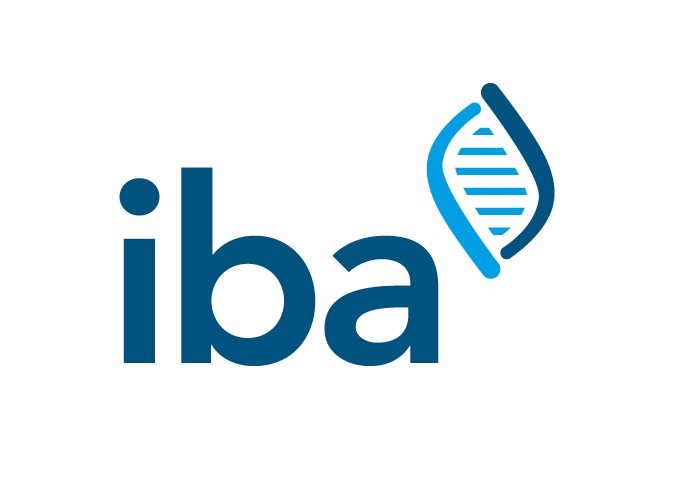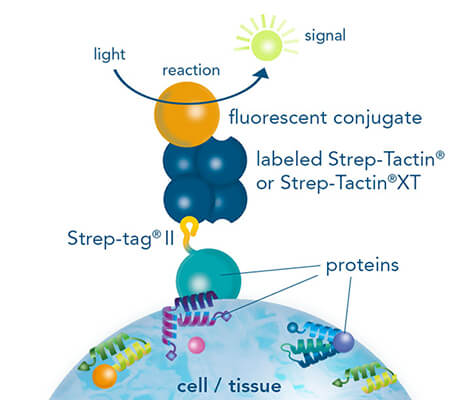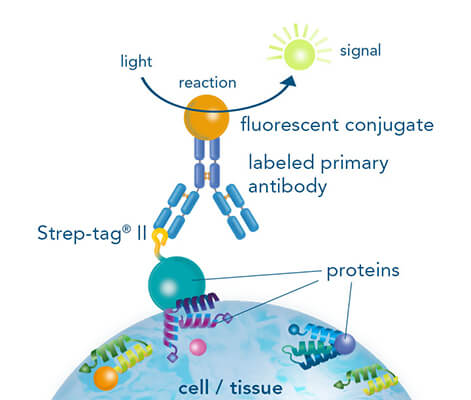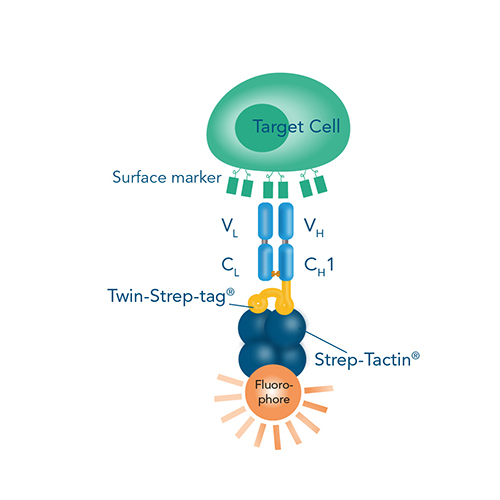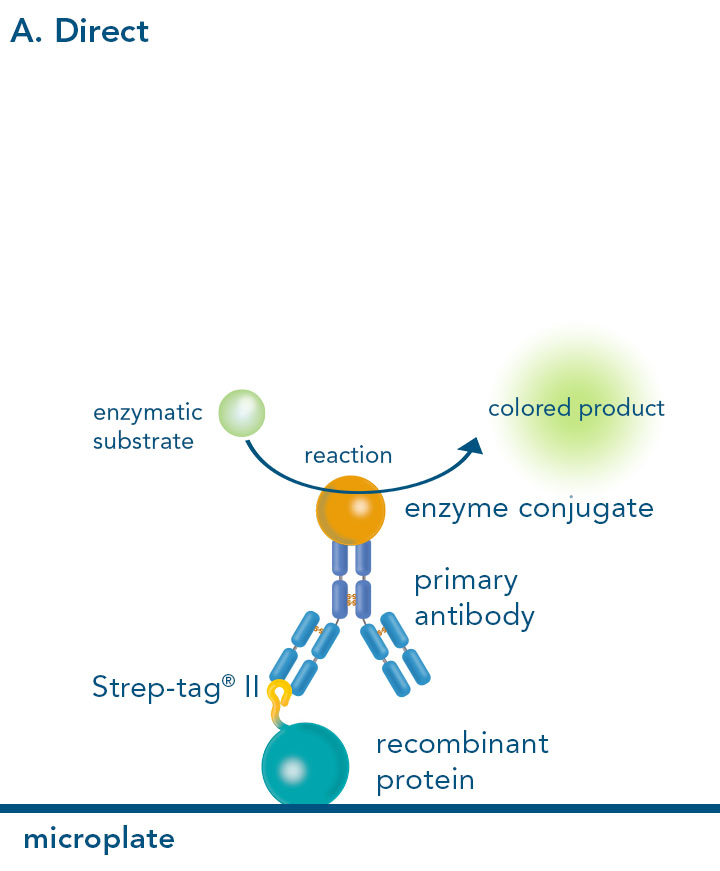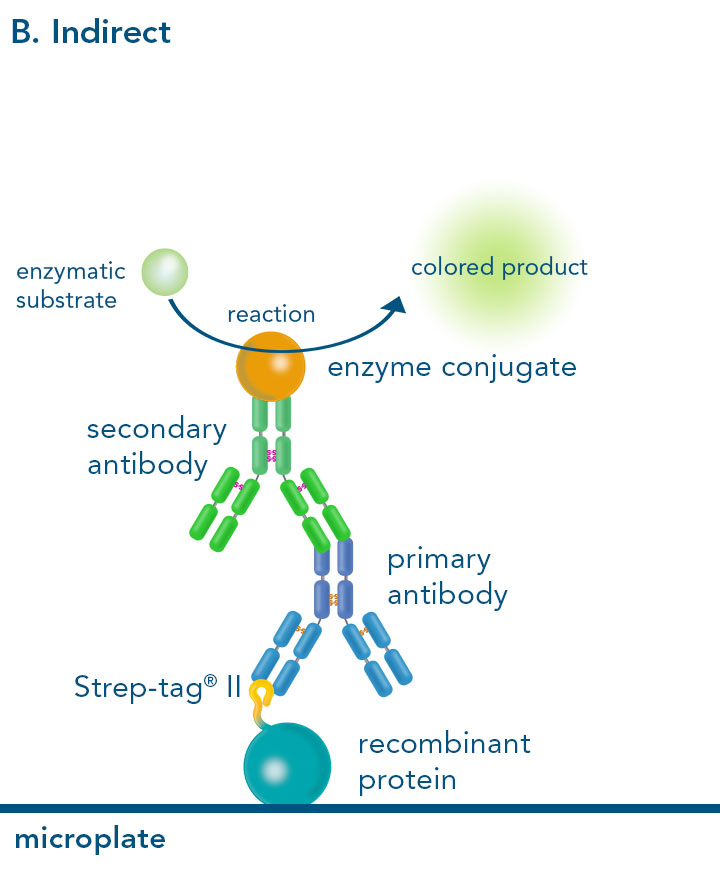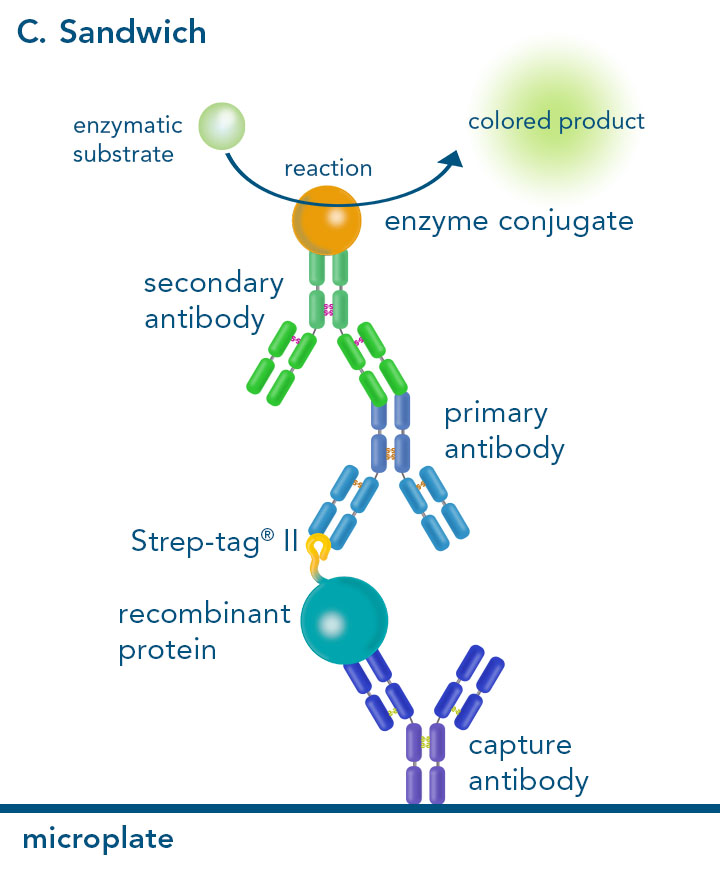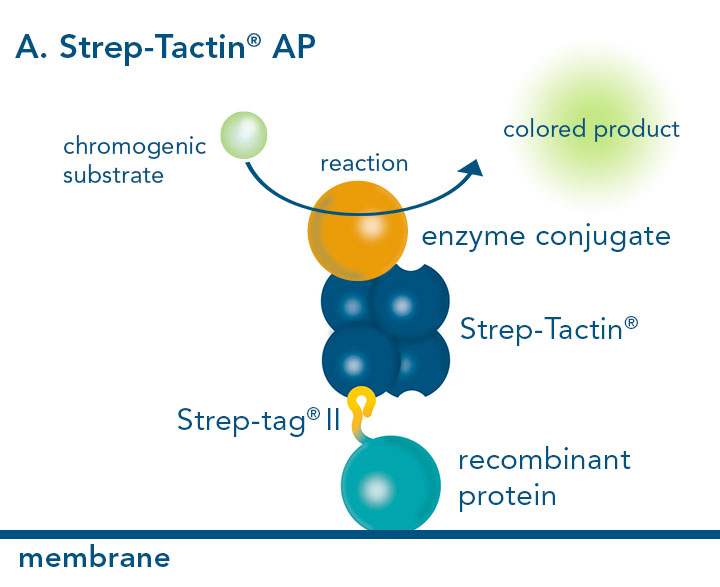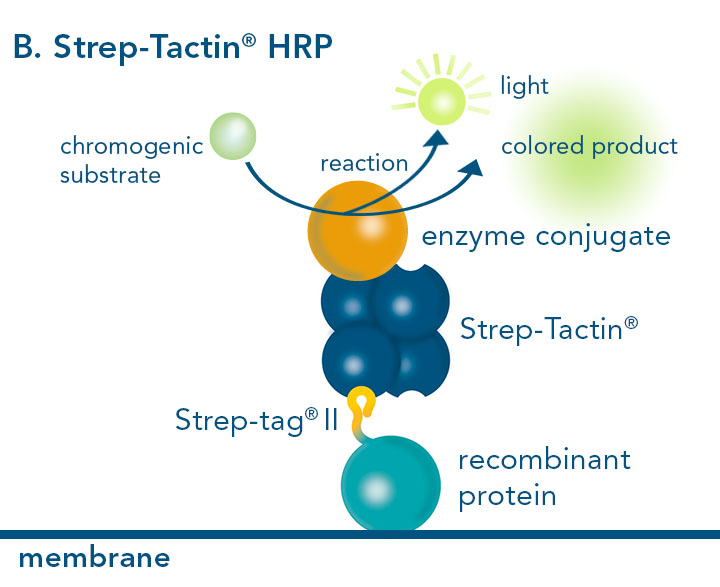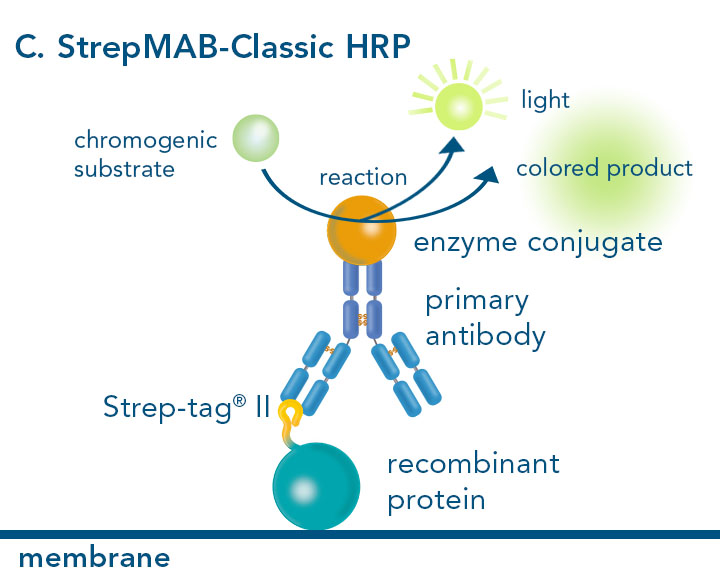Fluorescently stained cells are frequently deployed in flow cytometry analysis, which can be conducted both, before and after cell isolation, delivering insights into cell functions for basic research and clinical trials. Here, the labeled cells pass a light beam inside a flow cytometer with high velocity, thereby providing a multitude of information on physical and chemical properties and a lucid quantitative display of different cell populations. Fluorescence-activated cell sorting (FACS) using a sorter is a specialized form of flow cytometry, where target cells are not subsequently discarded, but rather rigorously divided into defined subpopulations according to their fluorophore label – hence, surface marker identities – and retained for further downstream processing.
For staining of Strep-tagged targets, Strep-Tactin® or Strep-Tactin®XT conjugated to different fluorophores can be used or alternatively, the StrepMAB-Classic or StrepMAB-Immo antibody with different fluorescent conjugates.
Besides the direct staining of the target, T cells represent a prominent target of this staining procedure due to their significant roles in immune response, and can be labeled in a surface marker- or antigen-specific manner for further investigation. While high-affinity antibody conjugates targeting individual T cell surface proteins are the most widely used tool, antigen-specific labeling can be achieved by the utilization of multimerized major histocompatibility complexes (MHCs) presenting the respective antigen.
However, a major limitation of conventional cell labeling techniques applied for FACS is that the antibodies or MHC multimers used irreversibly bind the cells, block the epitopes and therefore possibly interfere with proper cell function. Our Fab-TACS®/Nano-TACS® (Traceless Affinity Cell Selection) and MHC I Streptamer® approaches enable fluorescent cell staining and isolation based on either recombinantly expressed MHC class I molecules with different peptides (MHC I-Streps) or on Fab-Streps/Nano-Streps. A special advantage of these techniques is the binding reversibility when combining these products with our Strep-Tactin® conjugates. This offers the possibility to remove all staining reagents after cell sorting and consequently to obtain highly pure and unmanipulated T cells.
